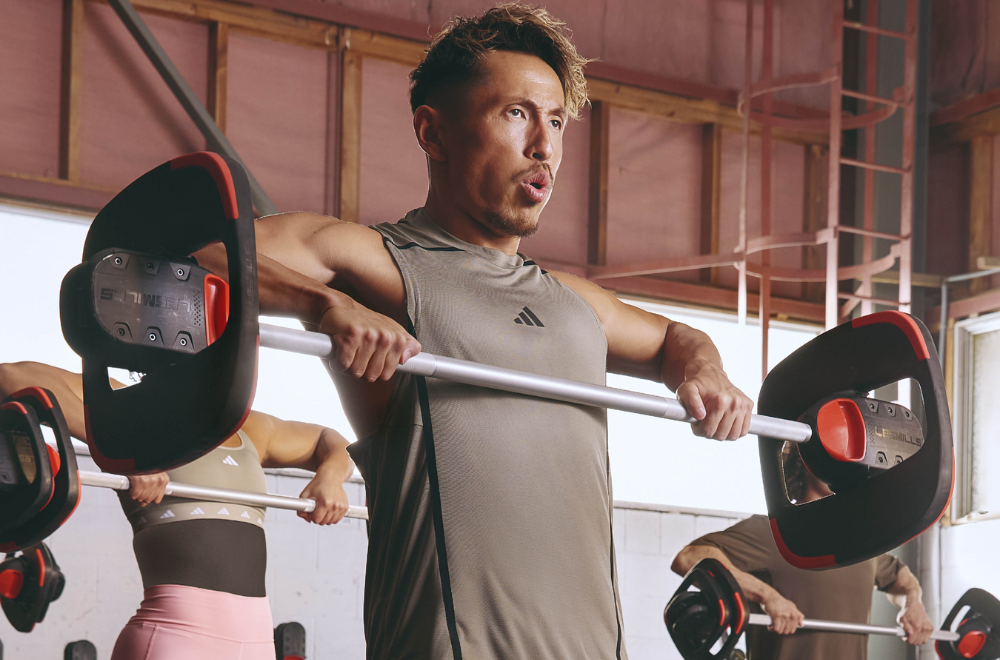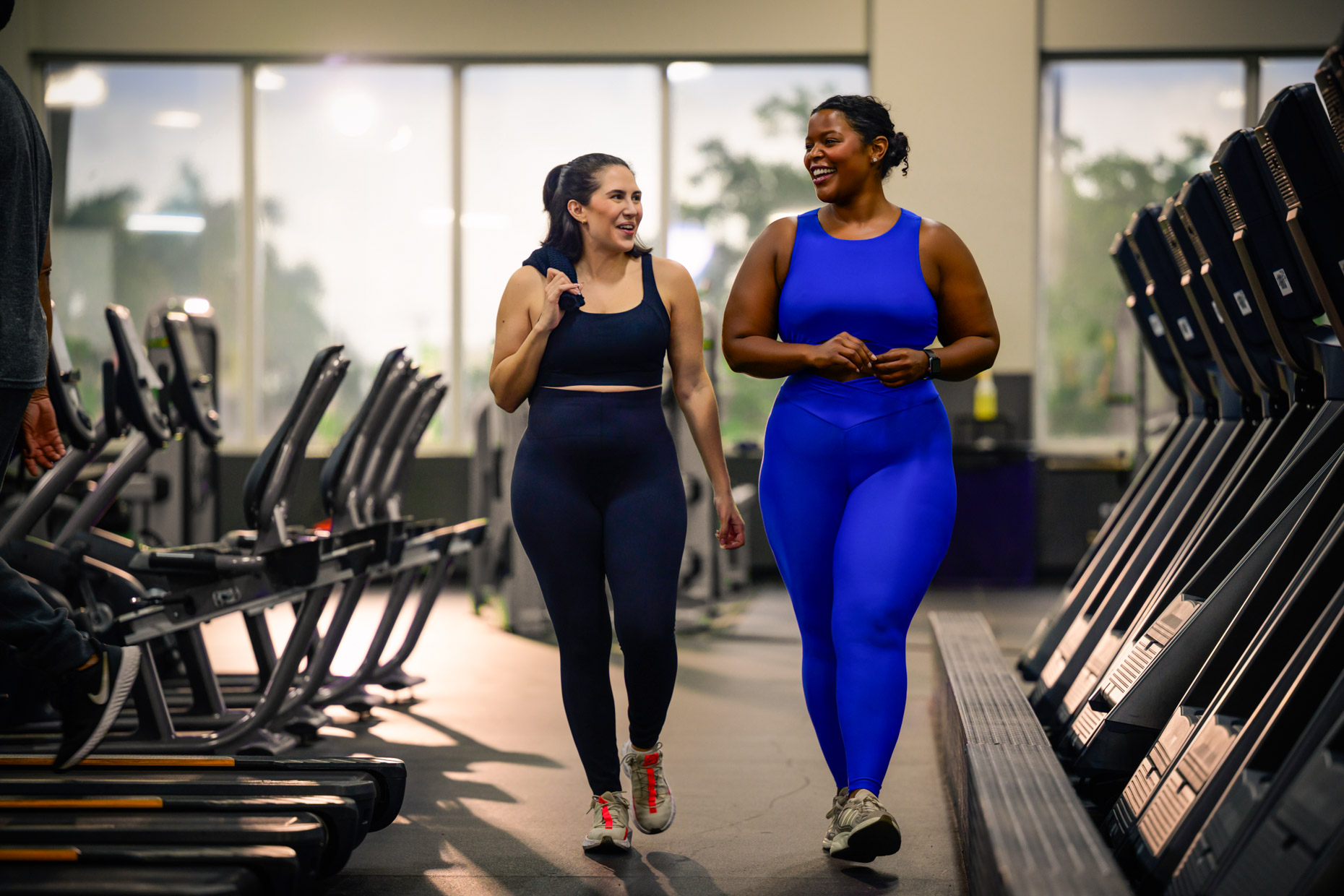Mindful movement. We hear a lot about mindfulness these days, and we know health is premised for most of us on getting movement into our days. But what is “mindful movement”?
The gym can be a battleground. Every workout can be a relentless campaign against our own perceived weaknesses, a constant push to squeeze out one more rep, lift a heavier weight, or shave another second off your time. The mantra could be “no pain, no gain,” and we wear exhaustion like a badge of honor. You can zone out during sets, mind replaying the day’s stresses or planning tomorrow’s tasks, while your body mechanically moves through the motions. You’ll progress, sure, but it will feel like a grueling, joyless slog. There are even times we push so hard, ignoring persistent aches, that we end up sidelined with minor injuries, feeling frustrated and defeated. You can be strong without being truly connected to your strength.
This was my breakthrough moment. Not in the weightroom, but ironically, during a particularly frustrating attempt at a complex yoga pose. Contorting myself, straining, breath ragged, mind screaming in protest. My instructor, observing my struggle, gently advised, “Don’t push, listen. What is your body telling you?” Her words were a revelation. In that instant, I shifted my focus from forcing the pose to simply feeling it. I paid attention to the subtle sensations in my muscles, the slight adjustments in my balance, and most importantly, the rhythm of my breath. The pose didn’t magically become easy, but the experience transformed. The struggle lessened, replaced by a profound sense of awareness and a surprising lightness.
That moment sparked a fundamental shift in my approach to all exercise. I started bringing that same intentional awareness into my weight training, my runs, even my daily walks. Instead of just “doing” a bicep curl, I began to feel the muscle contracting, to notice the subtle burn, to synchronize my breath with the movement. I stopped seeing pain as a barrier to be conquered and started seeing discomfort as a signal to be understood. The shift was profound. My workouts became less about fighting and more about exploring. I found new depths of strength I hadn’t accessed before, simply because I was more attuned to my body’s capabilities. Injuries became rarer, my recovery improved, and the joy of movement, which had been overshadowed by the relentless pursuit of “more,” returned in spades. This was the power of mindful movement.
It’s not about slowing down your progress; it’s about deepening your connection and accelerating your understanding. It’s about transforming your fitness routine from a chore into a profound conversation with your own body, unlocking not just physical gains, but a heightened sense of self-awareness and well-being.
The Inner Compass: Interoception and the Mind-Muscle Connection
To truly understand the profound impact of mindful movement, we must delve into the fascinating realm of interoception – your body’s “sixth sense.” Interoception is the physiological sense of the internal state of your body. It’s how you perceive and interpret signals originating from within: your heart rate, breath, hunger cues, muscle tension, pain, and even emotions. It’s the silent, continuous conversation between your brain and your internal organs and tissues. While often unconscious, this sense plays a critical role in regulating your bodily functions and influencing your emotions and decisions.
In the context of exercise, a well-tuned interoceptive sense is invaluable. When you engage in mindful movement, practices like focused breathing and systematic body scans during your workout actively sharpen this internal awareness. Instead of just going through the motions, you consciously direct your attention to the sensations within your muscles as they contract and lengthen, the subtle shifts in joint position, and the rhythm and depth of your breath. For example, during a squat, an enhanced interoceptive sense allows you to feel if your weight is evenly distributed, if your glutes are truly engaged, or if there’s undue pressure on your knees, long before discomfort becomes pain.
This heightened internal awareness leads directly to several significant benefits for your fitness:
- Better Form and Reduced Risk of Injury: By truly feeling how your body is moving, you can identify and correct subtle deviations in form in real-time. This precision helps you engage the correct muscles, distribute load effectively, and avoid positions that could lead to strain or injury. It’s like having an internal coach constantly providing feedback, guiding your movements towards optimal biomechanics.
- Stronger Mind-Muscle Connection: This is a cornerstone of effective strength training. When you’re mindfully aware of the muscle you’re trying to work, you can recruit more muscle fibers and activate them more effectively. This isn’t just a subjective feeling; research suggests that conscious focus on a muscle during exercise can lead to greater muscle activation and hypertrophy (growth). It allows you to maximize the benefits of each repetition, ensuring your effort is channeled precisely where it’s intended.
- Enhanced Performance and Adaptability: A finely tuned interoceptive system means you can better gauge your body’s capacity and recovery needs. You learn to differentiate between productive muscle fatigue and signs of overexertion, allowing you to push when appropriate and back off when necessary. This self-regulation prevents burnout and fosters sustainable progress.
- Physiological Effects of Mindfulness on Exercise: Beyond the physical sensation, mindfulness has profound physiological effects that directly benefit your workout. By focusing on deep, diaphragmatic breathing and cultivating a calm, non-judgmental awareness, you activate the parasympathetic nervous system – your “rest and digest” mode. Even during strenuous exercise, mindful breathing can help to modulate your sympathetic (fight or flight) response. This doesn’t mean your heart rate won’t increase during a cardio session, but it can help lower baseline heart rate, reduce excess physiological stress, and promote more efficient recovery between sets or after your workout. By reducing the overall physiological stress burden, mindfulness can help lower blood pressure, improve cardiovascular efficiency, and optimize your body’s ability to recover and adapt to the demands of exercise. It’s about bringing a sense of calm and control to what can often be a physically demanding and mentally challenging endeavor.
In essence, mindful movement transforms exercise from a purely physical act into a rich, internal experience, empowering you with a deeper understanding of your body and unlocking enhanced physical and mental results.
Your Mindful Workout Experience: The Bicep Curl Reimagined
Let’s take a familiar exercise, the bicep curl, and transform it into a mindful movement experience. This isn’t about changing the mechanics of the exercise, but about fundamentally shifting your awareness during the exercise. You can apply this principle to any movement, from a squat to a plank to a running stride.
The Setup:
- Choose a weight that allows you to perform 8-12 repetitions with good form, but without struggling so much that you lose focus on sensation.
- Find a quiet space where you won’t be easily distracted. If in a gym, put on some calming music or use noise-canceling headphones if possible.
- Stand tall, feet shoulder-width apart, holding a dumbbell in each hand, palms facing forward.
- Before you even lift the weight, take three slow, deep breaths. Inhale through your nose, feeling your belly expand, and exhale slowly through your mouth, releasing any tension.
The Mindful Repetition:
- The Initiation (Inhale): As you begin to curl the weight upwards, consciously engage your core. Feel the subtle tightening in your abdominal muscles, providing stability for your spine. As you inhale, focus on the expansion of your rib cage and the slight lift of your chest. Do not rush this first phase.
- The Contraction (Exhale and Feel): Slowly curl the dumbbells upwards, paying exquisite attention to the sensation in your biceps. Feel the muscle fibers shortening, thickening, and working. Don’t just lift the weight; feel your bicep doing the work. Synchronize this upward phase with a slow, controlled exhale. Imagine the breath fueling the contraction. Notice the pressure in your grip, the tension in your forearms, and the slight movement in your shoulders, even if they remain still. Is one bicep feeling more engaged than the other? Bring your awareness there.
- The Peak Contraction (Pause and Absorb): At the very top of the curl, pause for a brief moment. This isn’t just a static hold; it’s a moment to truly feel the peak contraction of your bicep. Can you squeeze it just a little bit more? Notice the warmth building in the muscle. Observe any tension elsewhere in your body – are you clenching your jaw? Are your shoulders creeping up to your ears? Consciously relax any unnecessary tension.
- The Release (Inhale and Lengthen): With controlled movement, slowly lower the dumbbells back to the starting position. This eccentric (lowering) phase is just as important as the concentric (lifting) phase. Feel your biceps lengthening under tension. As you lower the weight, slowly inhale, feeling your muscles stretch. Don’t let gravity do all the work; actively resist the descent. Notice how the muscles lengthen and soften as the weight descends.
- The Reset (Pause and Reflect): At the bottom of the movement, before starting the next repetition, pause. Take a full breath. Notice any lingering sensations in your arms. Are your muscles tingling? Do you feel a warmth? Briefly acknowledge the effort of the previous rep. This brief pause allows your nervous system to reset and prepare for the next mindful effort.
Throughout the Set:
Maintain your focus on the breath and the internal sensations. If your mind wanders (and it will!), gently guide it back to the present moment, to the feeling of your bicep, to the rhythm of your breathing. Don’t judge yourself; simply observe and redirect. This is the practice of mindfulness in action.
By applying this level of conscious attention to even a simple bicep curl, you’ll unlock a new depth of understanding and connection with your body. You’ll not only enhance your physical results by truly engaging the target muscles, but you’ll also cultivate a powerful mind-muscle connection that translates to greater awareness and control in all your movements, inside and outside the gym.
Unlock a new level of connection with your body. Experience the synergy of mind and muscle. Get your complimentary three-day pass to YouFit Gyms and try one of our classes that integrate mindfulness and movement, designed to elevate your fitness journey.
Current Trends and the Ascendance of Mindful Movement
The integration of mindful movement into fitness routines is not a fleeting trend but a core component of the evolving wellness landscape, aligning seamlessly with several significant shifts in how we approach health and exercise.
- Holistic Health and Wellness: There’s a growing recognition that true health encompasses more than just physical prowess. Mental well-being, stress reduction, and emotional balance are now seen as integral. Mindful movement directly addresses this by providing tools for stress reduction, emotional regulation, and fostering a deeper connection between the mind and body. It transforms exercise from a purely physical endeavor into a comprehensive well-being practice.
- Personalized Fitness and Intuitive Training: The “one-size-fits-all” approach is fading, replaced by a demand for personalized programs. Mindful movement empowers individuals to become more attuned to their own bodies, allowing for intuitive adjustments to workouts based on how they feel on any given day. This self-regulation prevents overtraining and promotes sustainable progress, making fitness truly personalized and responsive to individual needs rather than rigid schedules.
- Stress Reduction and Mental Resilience: In our fast-paced world, chronic stress is a pervasive issue. People are actively seeking ways to manage stress and build mental resilience. Mindful movement, through its emphasis on focused breathing and present-moment awareness, serves as a powerful antidote to stress, promoting relaxation and cultivating a calmer nervous system even during challenging physical activity. This makes workouts not just about physical gains, but also about mental fortitude.
- Emphasis on Injury Prevention and Longevity: As understanding of biomechanics and recovery deepens, there’s a greater focus on moving safely and sustaining activity long-term. Mindful movement, by sharpening interoception and body awareness, directly contributes to better form, reduced compensatory patterns, and an earlier recognition of potential issues, thereby significantly lowering the risk of injury and supporting lifelong physical activity.
- The Rise of Conscious Movement Modalities: Practices like yoga, Pilates, Tai Chi, and even certain forms of dance have always contained elements of mindfulness. Their increasing popularity reflects a desire for movement that is purposeful, controlled, and deeply connected to the breath and internal sensation. This trend is now influencing traditional strength training and cardio, encouraging a more thoughtful and internally focused approach to all forms of exercise.
- Data-Driven Wellness Meets Subjective Experience: While wearable technology provides objective data (heart rate, calories, steps), there’s a parallel appreciation for subjective internal experience. Mindful movement complements data by teaching individuals to interpret their body’s internal signals, integrating objective metrics with felt sensation for a more complete picture of well-being and performance.
These trends collectively underscore a profound shift in how we perceive fitness – moving beyond mere aesthetics or performance metrics to embrace a more integrated, conscious, and sustainable approach. Mindful movement is at the heart of this evolution, transforming workouts into opportunities for self-discovery, resilience, and profound well-being.
Best Practices for Cultivating Mindful Movement
To truly integrate mindful movement into your fitness routine and unlock its enhanced results, consider these best practices:
- Start Small and Be Consistent: You don’t need to meditate for an hour before every workout. Begin by incorporating short periods of mindfulness into familiar exercises. Choose one set of an exercise to focus entirely on sensation and breath. Gradually expand this practice. Consistency in even brief mindful moments will yield greater returns than sporadic, lengthy attempts.
- Prioritize Breath Awareness: Your breath is the anchor for mindfulness. Throughout your workout, consciously return your attention to your breathing. Notice its rhythm, depth, and how it syncs with your movements. Deep, diaphragmatic breathing helps to calm the nervous system and provides a constant point of focus, grounding you in the present moment.
- Engage Your Senses: Beyond just feeling the muscle, pay attention to all your senses. What do you see? What do you hear? How does the equipment feel in your hands? What is the temperature of the air? Broadening your sensory awareness helps to keep your mind from wandering and deepens your presence in the activity.
- Practice Non-Judgmental Observation: Your mind will wander; you will get distracted. This is normal. The practice of mindfulness isn’t about never having thoughts, but about noticing them without judgment and gently guiding your attention back to the present moment. Don’t criticize yourself for losing focus; simply acknowledge it and redirect your awareness.
- Focus on the Journey, Not Just the Destination: Shift your perspective from solely achieving an outcome (e.g., lifting X weight, running Y distance) to fully experiencing the process of movement itself. This allows for greater enjoyment and reduces the pressure that can often lead to burnout or injury. The effort and the sensation are the rewards.
- Incorporate Body Scans: Before or after a workout, or even during rest periods between sets, do a quick body scan. Close your eyes (if safe) and systematically bring your attention to different parts of your body, noticing any tension, warmth, tingling, or other sensations. This practice sharpens interoception and helps you identify areas that might need more attention or release.
- Connect Movement to Emotion: Notice how different movements make you feel. Are you feeling strong, joyful, challenged, or frustrated? Acknowledge these emotions without letting them derail your focus. This emotional awareness is part of the broader mindfulness practice.
- Integrate Rest and Recovery Mindfully: Mindfulness isn’t just for active periods. Apply it to your rest and recovery. When you’re stretching, foam rolling, or sleeping, be present. Consciously relax your muscles, breathe deeply, and allow your body to fully enter a state of repair.
By consistently applying these best practices, you’ll transform your fitness routine from a series of mechanical actions into a powerful practice of self-awareness and connection. Mindful movement is a skill that strengthens both your body and your mind, leading to more profound results and a richer, more enjoyable fitness journey.
Unlock a new level of connection with your body. Experience the synergy of mind and muscle. Get your complimentary three-day pass to YouFit Gyms and try one of our classes that integrate mindfulness and movement, designed to elevate your fitness journey and help you move with greater purpose.
Frequently Asked Questions (FAQ) about Mindful Movement
What exactly is mindful movement, and how is it different from just exercising?
Mindful movement is the practice of bringing conscious, non-judgmental awareness to the sensations, actions, and experience of your body as you exercise. It’s different from just exercising because it goes beyond the physical mechanics; it integrates your mind and body by focusing on internal cues like breath, muscle contraction, joint position, and even emotional responses during activity. Instead of simply pushing through reps or miles while your mind is elsewhere, mindful movement involves intentionally paying attention to how your body feels, how your breath supports your movement, and the quality of your form, making the exercise a holistic, present-moment experience rather than just a physical task.
How does mindful movement actually improve my physical results, like strength or endurance?
Mindful movement enhances physical results through several mechanisms. Firstly, by sharpening your interoception and mind-muscle connection, it allows you to better recruit and activate the target muscles, leading to more effective contractions and potentially greater hypertrophy (muscle growth) and strength gains from each repetition. Secondly, increased body awareness helps you maintain optimal form, which minimizes the risk of injury and ensures that the intended muscles are doing the work, not compensatory ones. Thirdly, by regulating your nervous system through focused breathing, mindful movement can improve efficiency, reduce perceived exertion, and even help manage fatigue, allowing you to sustain effort or recover more effectively between sets, ultimately contributing to better endurance and overall performance.
Can I practice mindful movement during high-intensity workouts like HIIT or running?
Yes, you absolutely can, and should, practice mindful movement during high-intensity workouts like HIIT or running. While the intensity might make it challenging to maintain constant focus, the principles remain the same. During HIIT, you can focus on the explosive power of each movement, the efficiency of your transitions, and the controlled rhythm of your breath during your work intervals, as well as the deliberate relaxation during your rest periods. For running, you can pay attention to your foot strike, the swing of your arms, the cadence of your steps, and the sensation of your breath supporting your stride. Mindful awareness in high-intensity settings helps to improve form under fatigue, optimize energy expenditure, and can even help reduce the feeling of perceived exertion, making challenging workouts feel more manageable and enjoyable.
How does mindful movement help with injury prevention?
Mindful movement is a powerful tool for injury prevention primarily by enhancing your body awareness and interoception. When you are consciously attuned to the sensations within your body, you can detect subtle signs of strain, imbalance, or incorrect form before they escalate into pain or injury. This early detection allows you to make immediate corrections to your movement patterns, adjust your intensity, or recognize when your body truly needs rest. By consistently focusing on proper alignment, muscle engagement, and smooth movement, you train your body to move more efficiently and safely, reducing the likelihood of compensatory movements that often lead to overuse injuries or acute strains.
What are some simple ways to start integrating mindfulness into my everyday workouts?
To begin integrating mindfulness into your everyday workouts, start with simple, actionable steps.
- Start with the Breath: Before and during your first few sets, consciously focus on your breath. Inhale deeply through your nose, letting your belly expand, and exhale slowly through your mouth. Synchronize your breath with your movements (e.g., exhale on exertion).
- Pick One Exercise: Choose just one exercise in your routine to practice fully mindfully. For that exercise, pay intense attention to the muscle contraction, the joint movement, and the stability of your body throughout the entire range of motion, from initiation to completion.
- Perform Body Scans: During warm-ups, cool-downs, or even during rest periods between sets, do a quick mental scan of your body. Notice any areas of tension or discomfort, and consciously try to release them.
- Remove Distractions: Whenever possible, minimize external distractions. Put your phone away, use noise-canceling headphones, and focus solely on the task at hand.
- Listen to Your Body’s Signals: Pay attention to sensations of fatigue, pain, or discomfort. Learn to differentiate between healthy muscle burn and warning signs of potential injury. Adjust your workout based on these internal cues rather than rigidly sticking to a pre-set plan if your body is signaling otherwise.
Unlock a new level of connection with your body. Experience the synergy of mind and muscle. Get your complimentary three-day pass to YouFit Gyms and try one of our classes that integrate mindfulness and movement, designed to elevate your fitness journey and help you move with greater purpose and awareness.










